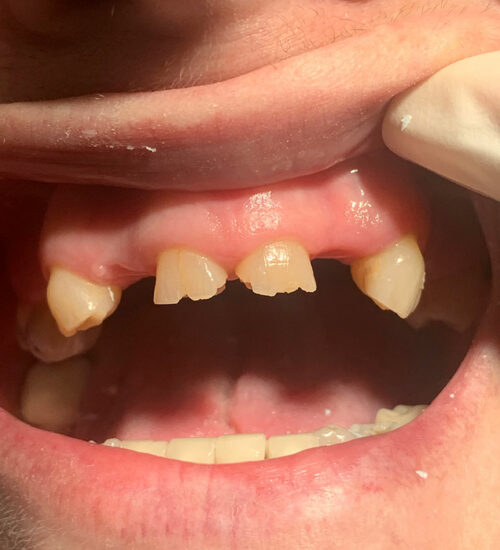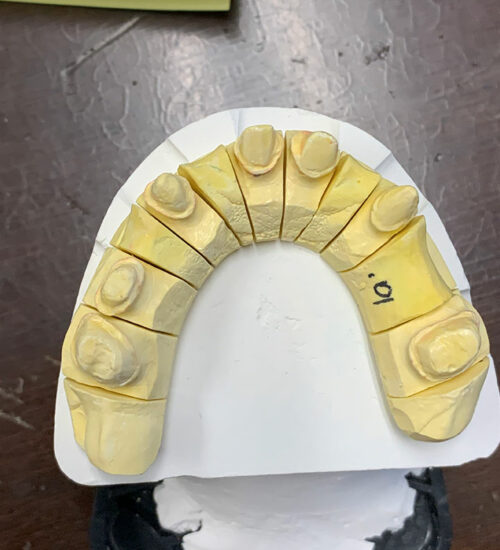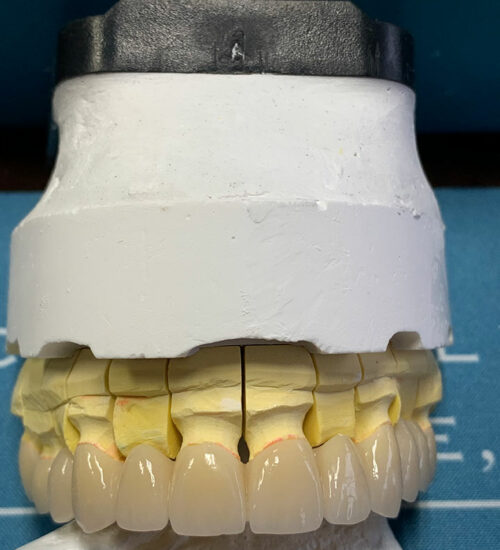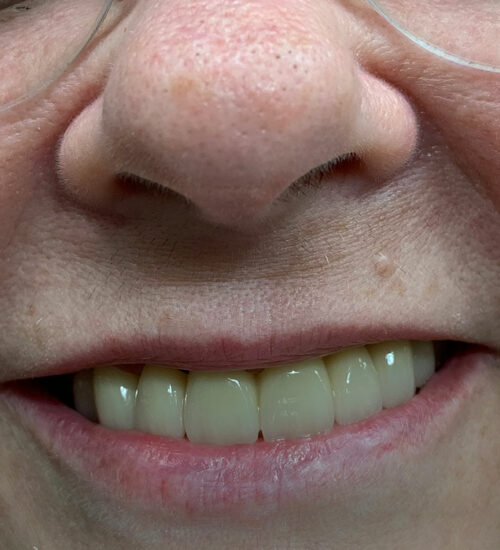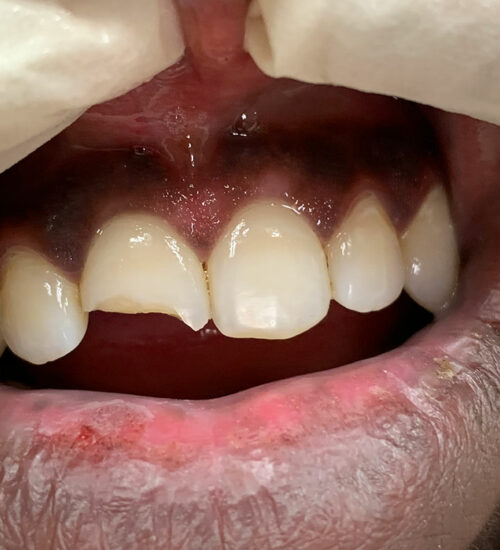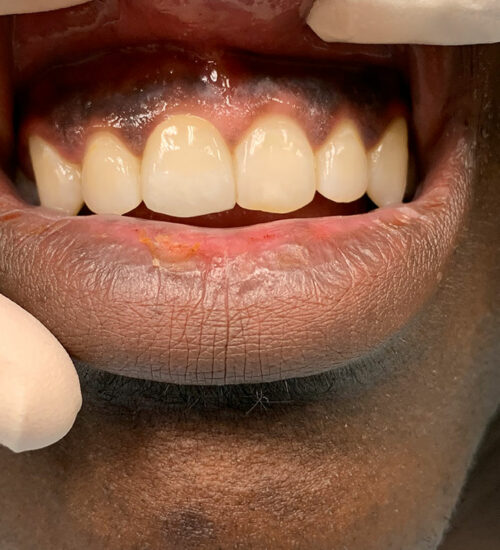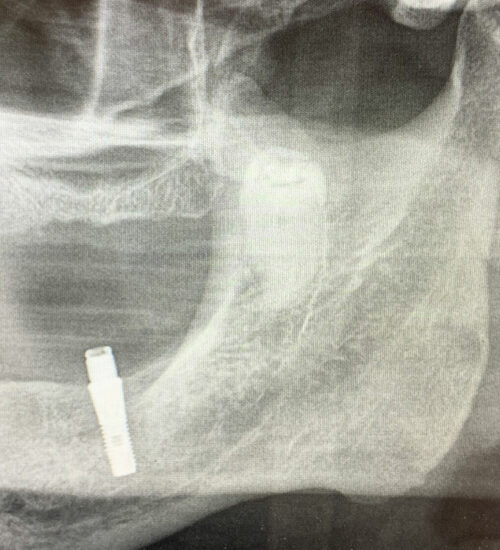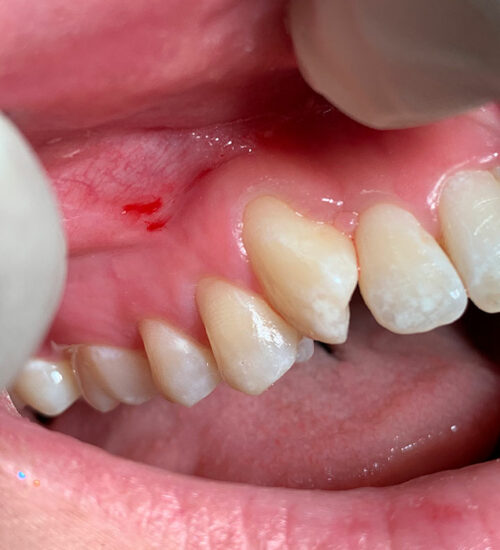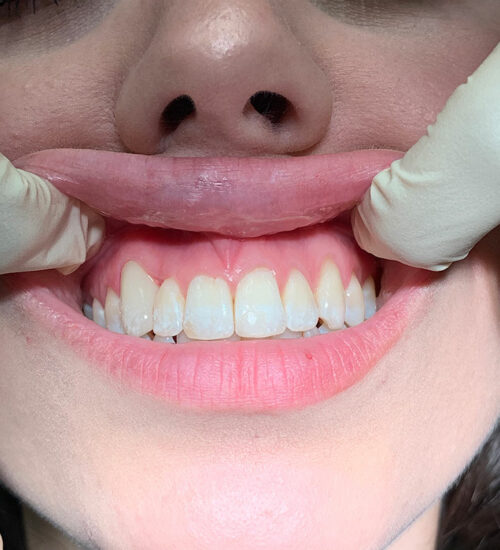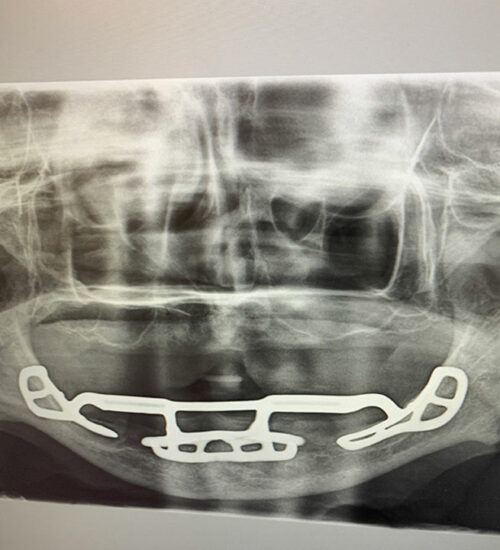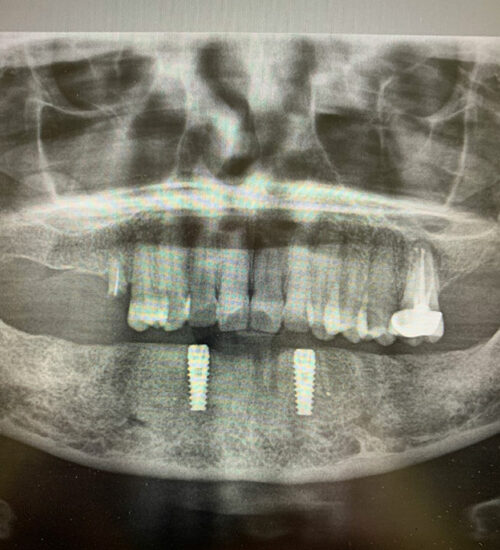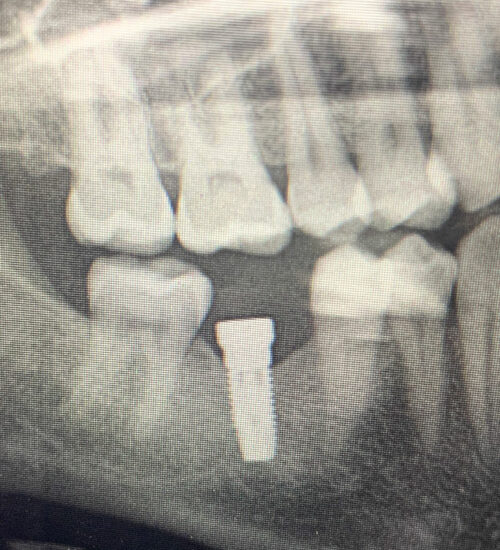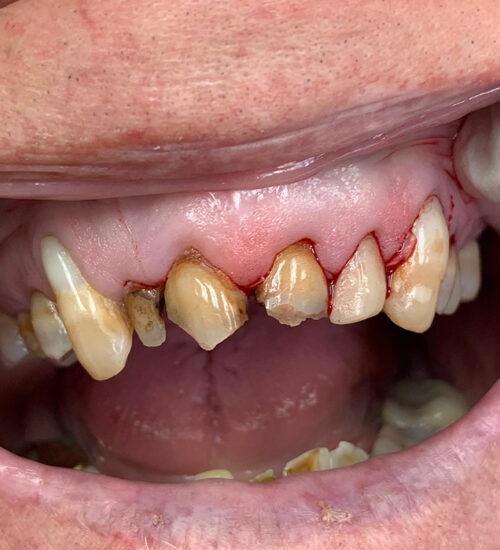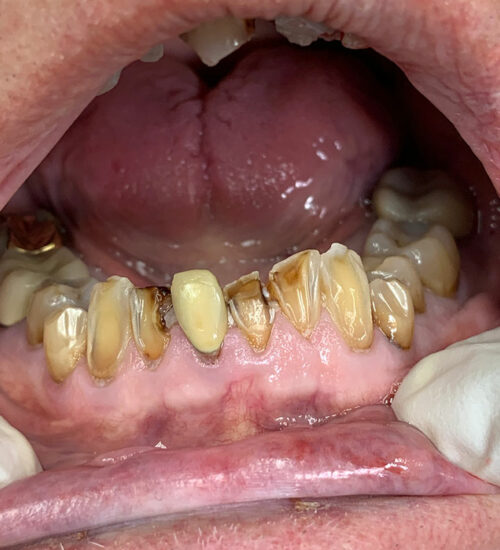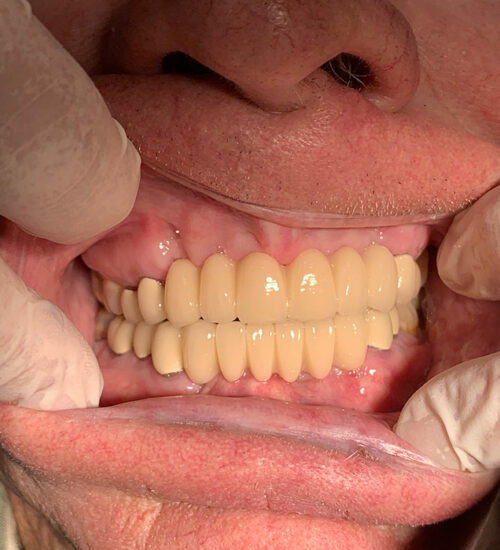Call Us: (254) 799-5000 | Email Us
Before And After
Case Number Seven
To stabilize her lower denture after losing her teeth from advanced periodontal disease, this patient had this metal framework placed on her mandible in the 1960’s. The patient, now in her 90’s, still comes in to the office for preventive care every six months. She takes immaculate care of this attachment because she knows if it is lost for any reason, her resulting edentulous mandible would be very difficult to treat at this time and her age. Her ability to chew solid food would become impossible.
Case Number Eight
The simplest way to stabilize your lower, floating lower denture: Placement of two full-body implants. After 4-6 months of healing, a Locator Snap-On attachment is placed. The patient must remove the lower denture daily to clean the “posts” in their mouth, then snap the denture back on to the posts. Instant stability is achieved.
Case Number Nine
I extracted tooth #30 (lower right first molar) because of a failed root canal and subsequent fracture. This tooth (and its twin on the lower left) represents a good percentage of the first teeth adults lose for various reasons. The importance of replacing permanent teeth that are lost cannot be overstated. Why? Give teeth time and space to move… and they will do just that, move. What’s the problem with movement? Movement creates changes in your natural bite relationship, often leading to fractures, tooth sensitivity, esthetic issues and more tooth loss. So, if you lose a tooth, get it replaced within the first year. Save time, save other teeth, save money and more dental problems by doing so. Here, a single full-body implant was placed four months after extraction. Four months later a crown will be placed on the implant. Sometimes, the implant can be placed on the same day as the extraction, reducing treatment time by one-half.
Case Number Ten
This snuff “dip” user has destroyed his teeth after a lifetime of tobacco use. Two treatment choices were given to him: a- multiple extractions, multiple crowns, fabrication of removable partial dentures b- multiple extractions, healing time of several months then fabrication of upper and lower fixed (non-removable) bridgework.
The patient did not desire removable teeth. A functional, esthetic result was achieved.


